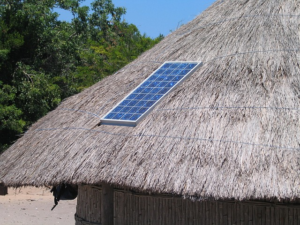
Nations all over the earth are establishing carbon-neutrality goals. Minimizing emissions requires a mass restructuring of the energy sector. The U.S. and most other countries source most of their power from fossil fuels, creating atmospheric degradation.
Professionals plan on using smart technology to enhance the country’s access to renewable energy. Increasing the production of solar energy comes with specific security concerns. Before evaluating the safety of a smart grid, individuals must assess the technology’s structure and functions.
The Clean Electric Grid
In the U.S., President Biden developed the Build Back Better plan to increase national sustainability levels. Part of the agenda involves expanding renewable energy production and using the advancements to support the electric grid. The administration allocated $2 trillion to the clean energy sector, funding smart grid technology.
Smart grids use a combination of technologies and economic structures, producing an efficient, reliable, and sustainable energy source. They utilize solar energy infrastructure systems and smart meters to meet consumer energy demands without generating unnecessary waste. Additionally, the grids use autonomous sensors and artificial intelligence (AI) technology connected through the internet of things (IoT).
IoT effectively produces a low-emission, high-reliability power grid, but it increases the risk of cyberattacks. The systems rely on high-speed communication channels, relaying energy demand data to the grid for adequate production and distribution. When hackers disrupt the channel, grids are unable to meet consumers’ electricity needs.
How Well Is It Protected?
Digitizing the electric grid may successfully reduce atmospheric degradation, connecting solar power to regional distribution systems. It also comes with security challenges, increasing the smart grid’s vulnerability. Ukraine experienced one of the first cyberattacks on its energy grid, increasing global concern around electricity protection.
In 2015, Ukraine’s power grid operators lost control of their system as hackers took over. The attack created a mass power outage, causing nearly 230,000 individuals to lose power. It occurred in the evening in December, leaving residents without lights or heat, making for a dangerous situation for many.
In the past, energy professionals’ major outage concerns revolved around natural disasters and other environmental-related limitations. Today, the fear around data security creates new challenges. Smart technology is necessary to maintain the solar-powered grid, and sourcing efficient security measures is essential.
The rise of remote monitoring increases the risk of cyberattacks in the renewable energy sector. Managing an energy system through multiple devices and platforms enhances a hacker’s opportunity to enter the system. Many professionals also regulate solar farms’ power production at a distance, connecting the outputs to the grid.
They manage the farms using a public IP address, increasing the risk of operational, monitoring, and maintenance-related attacks. Energy professionals can reduce the risk by establishing effective security measures.
Preventing Cyber Attacks
The government is moving towards securing the digital realm, increasing various industries’ access to protection enhancing …….
Source: https://www.altenergymag.com/story/2021/10/solar-energy-infrastructure-is-it-cyber-secure/36147/






